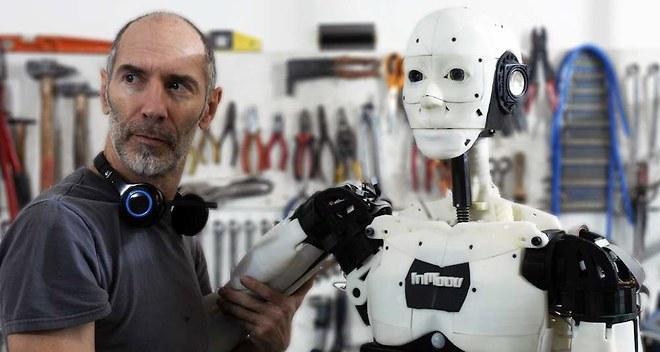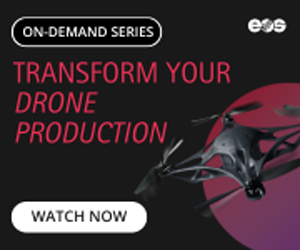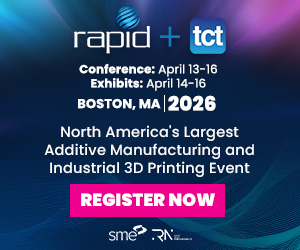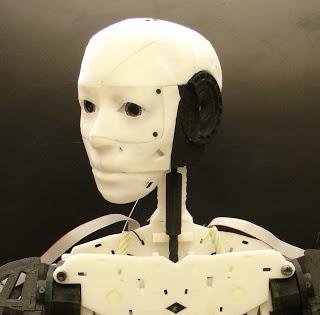 You would think that, given the prevalence of robots with humanoid form in popular culture–particularly in literature and film–we humans prefer that our robots resemble us. That’s probably not the case, however, suggests Dr. John Murray of the University of Lincoln in Lincolnshire, UK. Dr. Murray, who specializes in robotics, has found through ongoing research that people may not actually be particularly comfortable with robots that are overtly lifelike. He is spearheading an ongoing robotics project that uses three 3D printed robots to figure out why, in real life, we actually seem to have an aversion to anthropomorphic robots.
You would think that, given the prevalence of robots with humanoid form in popular culture–particularly in literature and film–we humans prefer that our robots resemble us. That’s probably not the case, however, suggests Dr. John Murray of the University of Lincoln in Lincolnshire, UK. Dr. Murray, who specializes in robotics, has found through ongoing research that people may not actually be particularly comfortable with robots that are overtly lifelike. He is spearheading an ongoing robotics project that uses three 3D printed robots to figure out why, in real life, we actually seem to have an aversion to anthropomorphic robots.
“I want to know what people want in a robot,” explains Dr. Murray, who is a researcher and teacher in the School of Computer Science at the University of Lincoln in eastern England. In addition to robotics and human-robot interaction he also specializes in aerial surveillance and unmanned aerial devices (UAVs), and 3D printing.
With his three robots, Marc, Erwin, and Tammie as mechanical guinea pigs if you will, Dr. Murray is exploring how people engage with robots. He wants to know why, despite our apparent fascination with humanoid robots, the more like a human a robot is, the more disturbing people find it. Dr. Murray asks volunteers to engage with Marc, Erwin, and Tammie by conversing with them, playing games, and interacting in other ways. “When you think of robots on TV and in films,” said Murray, “they tend to operate flawlessly–like the Terminator. He achieves his mission every time.”
The University of Lincoln’s robots were produced using an open-source design from InMoov, a project of French model maker and sculptor, Gael Langevin. InMoov, explains Langevin, is “the first life size humanoid robot you can 3D print and animate.” His robot can be produced using any 3D printer with a build volume of at least 12 x 12 x 12cm. He conceived of InMoov as a development platform for makers and hobbyists but also for use by universities and labs. Langevin designed InMoov using the open source software, Blender, and the robot is powered by more open source 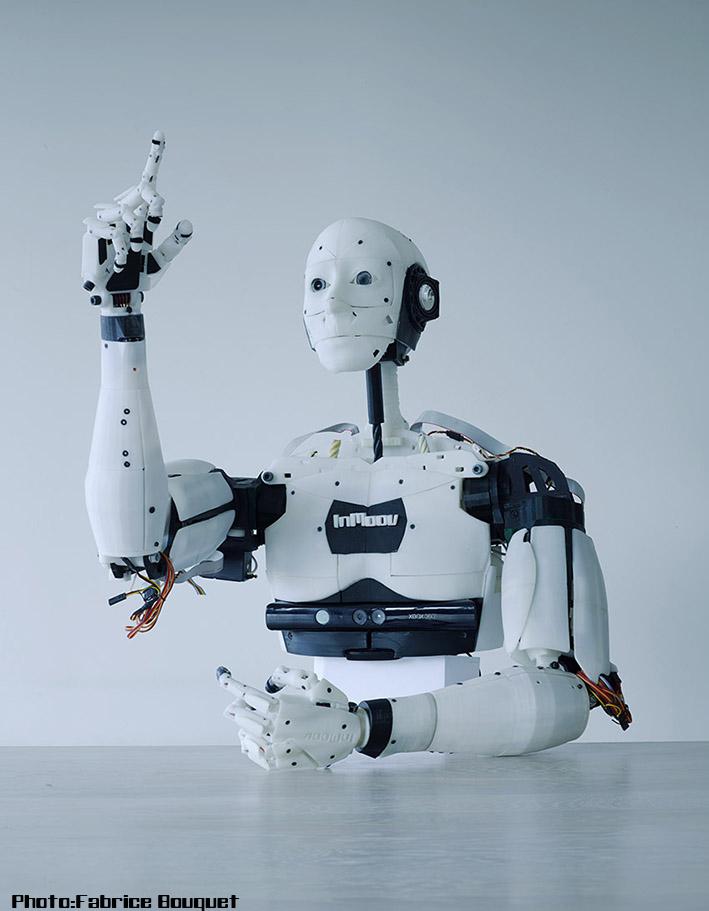 software, MyRobotLab.
software, MyRobotLab.
Dr. Murray’s InMoov robots have cameras in their eyes as well as microphones in their bodies. Additionally, they have contact sensors that detect their distance from people and, we assume, other objects. All three robots were individually programmed so they function differently from one another and thus in their interactions with people. Specifically, said Dr. Murray, “…We wanted to create a robot that’s forgetful and more human-like to see how people relate to it.” The idea is that humans might be more amenable to androids–anthropomorphic robots–if the machines not only had human capabilities, but also human imperfections. For instance, volunteers who interacted with the robots would introduce themselves and then, on subsequent visits, the robot would have forgotten an individual volunteer’s name.
Dr. Murray hopes to eventually deploy the robots in, for instance, hospitals and museums in Lincolnshire, where they could be useful in supplementing if not substituting for human labor. Sophisticated robots are being used in medicine, but none are humanoid–they don’t need to be. In the case of performing services for humans like aiding busy hospital staff or guiding visitors through museums, it seems like a robot with human-like idiosyncrasies might make people more comfortable in such interactions. In this early stage, Marc, Erwin, and Tammie, the InMoov robots of Lincolnshire, are sort of ambassadors for a possible android horde. We hope Dr. Murray is teaching them manners.
What are your thoughts about having 3D printed humanoid robots in places like Museums and hospitals? Let us know your thoughts in the 3D Printed Imoov Robot forum thread on 3dpb.com.
Subscribe to Our Email Newsletter
Stay up-to-date on all the latest news from the 3D printing industry and receive information and offers from third party vendors.
Print Services
Upload your 3D Models and get them printed quickly and efficiently.
You May Also Like
Sustainability Meets Speed: How Latin America’s Medtech Industry is Reshaping Global Clinical Trials
The promise of additive manufacturing—specifically 3D printing—to transform medical device production is currently constrained by several critical factors. Medtech startups, in particular, face a formidable “proof-of-concept bottleneck.” They struggle not...
From Spare Parts to Strategic Advantage: How AM Is Reshaping Defense Readiness
When I talk with defense customers and partners about additive manufacturing, the conversation rarely starts with, “What can we print?” It usually starts with something like, “We can’t get this...
New 3D Printed Hydrogen Cell Factory Just Switched On in Catalonia
The Catalonia Institute for Energy Research (IREC) has opened a pilot plant that 3D prints advanced ceramic devices for renewable hydrogen systems. It’s described as the first facility on the...
3D Printing News Briefs, November 27, 2025: Awards, Sand Binder Jetting, Tabletop Gaming, & More
To all those who celebrate, happy Thanksgiving! In today’s holiday 3D Printing News Briefs, we’re starting off with some exciting news: the winners of this year’s Formnext Awards! Then, we’ll...


